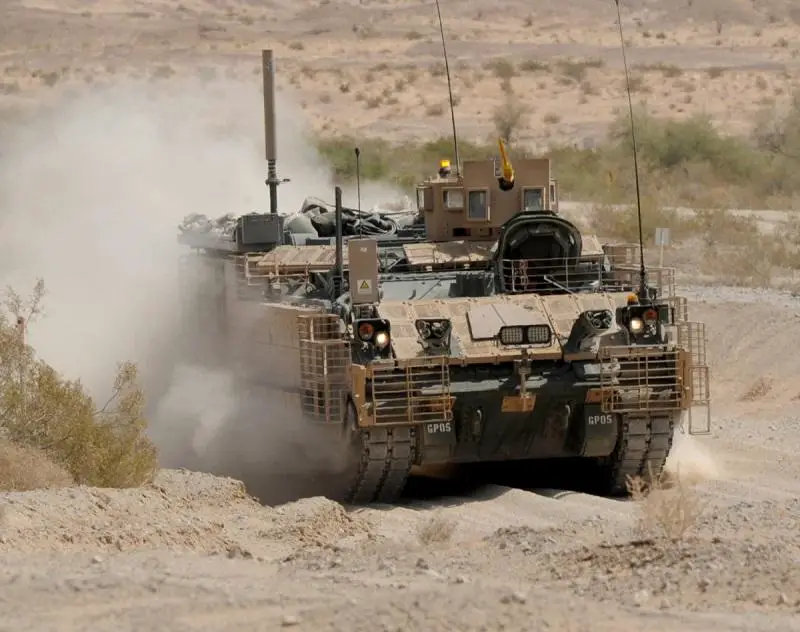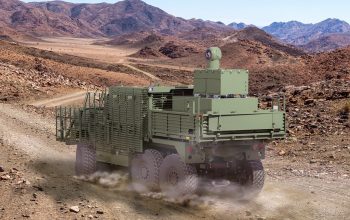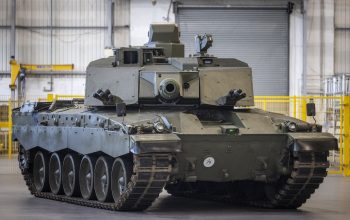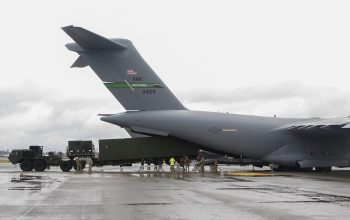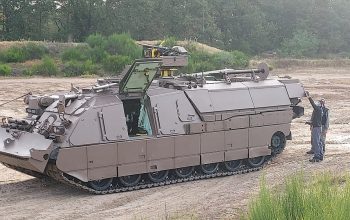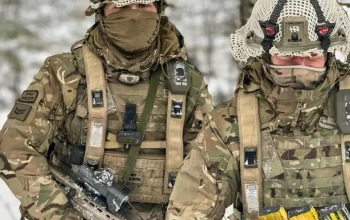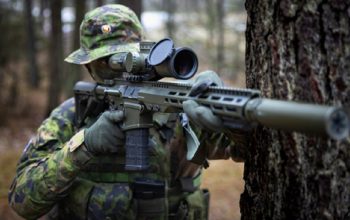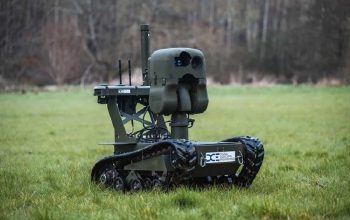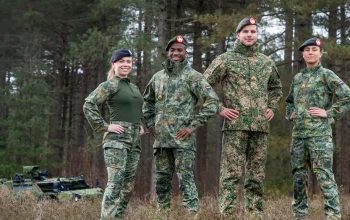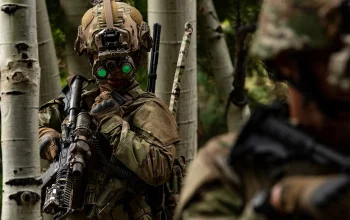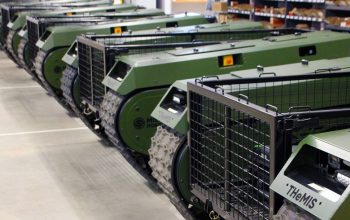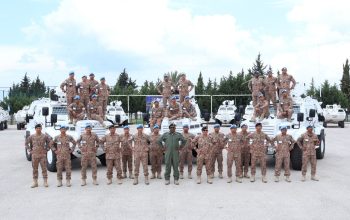Soldiers are getting a chance to evaluate and train with a new armored turret system for the Armored Multi-Purpose Vehicle, the latest U.S. Army platform within the high-priority Next Generation Combat Vehicle modernization program. The new Objective Commander’s Weapon Station integrates with all five variants of the AMPV: a general-purpose vehicle, mission command vehicle, mortar carrier, medical evacuation and medical treatment vehicles. The AMPV is currently in low-rate production. The OCWS system, which addresses the ongoing need to develop advanced armor protection and capabilities for Soldiers, is part of the broad sweep of modernization efforts within the U.S. Army. The advanced protection kit has a new armor alloy and a titanium hatch design.
“The OCWS is definitely one of our more sophisticated turret systems. The AMPV was developed to operate on the front lines of the battlefield, and our team had to accommodate the challenging requirements associated with that,” said Thomas Kiel, who leads the engineering activity for U.S. Army and U.S. Marine Corps armored and tactical vehicle turrets within the DEVCOM Armaments Center Force Protection team.
“Our initial prototype was integrated with the vehicle at the test site for a formal user evaluation,” said Narayan Bhagavatula, Program Lead for Gunner Protection Systems within Program Manager Soldier Lethality, also located at Picatinny Arsenal.
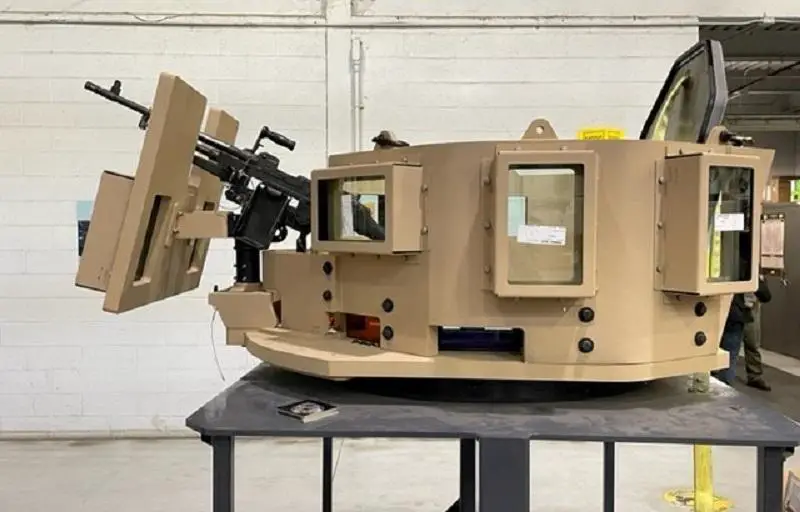
The OCWS turret protects the vehicle commander, who operates as the gunner on the top side of the vehicle. Essential features include periscopes, motorized rotation and a spacious interior that allows the gunner to perform complex missions under protection. The weapon mount on the system gives the gunner full access to the suite of crew served weapons, providing a range of firepower options. The OCWS was developed and prototyped by engineers at the U.S. Army Combat Capabilities Development Command Armaments Center at Picatinny Arsenal, New Jersey. The Armaments Center reports to the U.S. Army Combat Capabilities Development Command, which is part of Army Futures Command.
At the Soldier-centered event, the turret team gathers all comments and recommendations from Soldiers and incorporates them into the design. Engineering analysis of the updated computer models follows each design change. In collaboration with Rowan University in Glassboro, New Jersey, the Armaments Center is acquiring new simulation technologies and toolsets that make it possible to evaluate the overall effectiveness of new weapon systems through fully immersive environments. The AMPV with OCWS has undergone reliability, availability, and maintainability testing at Yuma Proving Ground, Arizona, as well as live-fire testing at Aberdeen Proving Ground, Maryland.
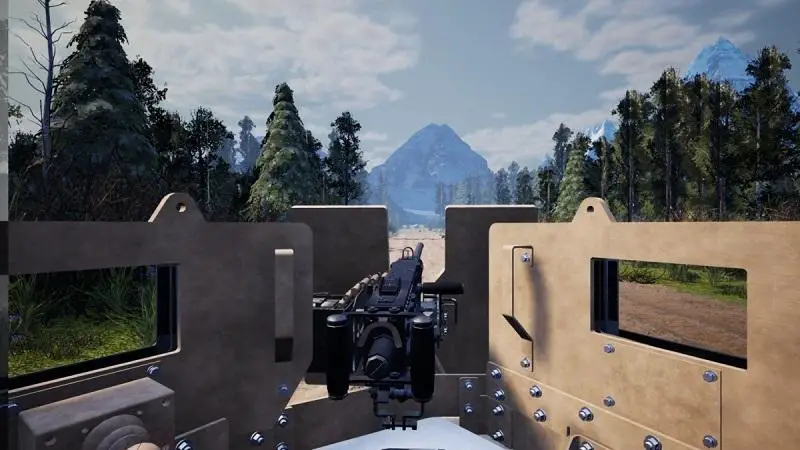
The Armored Multi-Purpose Vehicle (AMPV) is a U.S. Army program to replace the M113 armored personnel carrier and family of vehicles. AMPV is a sub-project of the Next Generation Combat Vehicle program. In 2014, the U.S. Army selected BAE Systems’ proposal of a turretless variant of the Bradley Fighting Vehicle to replace over 2800 M113s in service. As of 2013, five variants of the AMPV are planned: M1283 General Purpose (522 planned), M1284 Medical Evacuation Vehicle (790 planned), M1285 Medical Treatment Vehicle (216 planned) and M1286 Mission Command (993 planned). As of 2015 the program was scheduled to deliver 2,897 vehicles at a total cost of $10.723 billion, or $3.7 million per vehicle. The first AMPV prototype was rolled out in December 2016, and the first production vehicles began rolling out in September 2020.
The DEVCOM Armaments Center has the lead within the DOD in the development of Tactical Vehicle Turret Systems. More than 50,000 systems have been fielded on a variety of platforms, including the Humvee, Mine Resistant Ambush Protected Vehicles, the MRAP All-Terrain Vehicle and others. Objective Gunner Protection Kit Turrets are standard for the Joint Light Tactical Vehicle. At least 14 patents have been issued related to the development of turret systems, including three that were selected as Army’s Greatest Inventions. AGI awards are considered somewhat of a “Soldier’s Choice Award” because nominations are judged by a panel of noncommissioned officers with recent combat experience as well as practical, hands-on experience.
